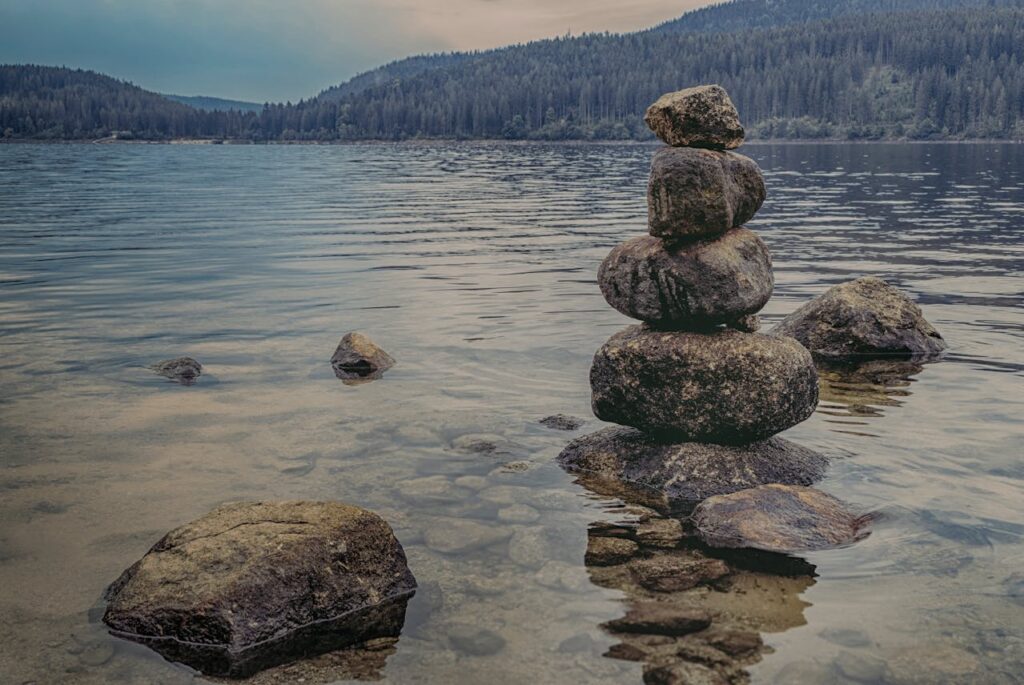The Art of Solitude: Embracing Alone Time Across Cultures
In today’s fast-paced world filled with constant connectivity and bustling activity, the concept of solitude often gets overlooked. Yet, across cultures and throughout history, the practice of spending time alone has been celebrated as essential for personal growth, creativity, and spiritual well-being. Let’s explore how different cultures around the globe embrace solitude and its profound benefits.
1. Japanese Tradition of “Me Time”
In Japan, the practice of “me time,” known as “wabi-sabi,” emphasizes finding beauty and serenity in simplicity and solitude. This concept is deeply rooted in Japanese aesthetics and philosophy, encouraging individuals to appreciate the impermanent and imperfect nature of life. Through activities like tea ceremonies, flower arranging (ikebana), or meditative walks in nature, the Japanese honor the value of solitary moments for self-reflection and inner peace.
2. Nordic Hygge: Cozy Solitude
In Nordic cultures, particularly Denmark and Norway, the concept of “hygge” encompasses the feeling of coziness, contentment, and well-being, often achieved through solitary activities. Whether it’s curling up with a good book by the fireplace, enjoying a solitary nature hike, or savoring a cup of hot cocoa on a cold winter’s day, Scandinavians prioritize moments of quiet solitude as essential for mental and emotional recharge.
3. Aboriginal Dreamtime: Connection with Self and Spirit
Indigenous cultures, such as Australia’s Aboriginal peoples, have a rich tradition of solitude intertwined with spirituality and connection to the land. The concept of Dreamtime, or “Tjukurrpa,” refers to the Aboriginal understanding of the world’s creation and ongoing existence. Through solitary journeys into the wilderness, Aboriginal individuals seek spiritual revelation, guidance, and renewal, deepening their connection with themselves, their ancestors, and the natural world.
4. Italian Dolce Far Niente: Sweetness of Doing Nothing
In Italy, the art of “dolce far niente” translates to “the sweetness of doing nothing.” Italians understand the importance of leisurely moments spent in solitary contemplation or simply savoring life’s pleasures without feeling the need for productivity. Whether it’s enjoying a leisurely meal, people-watching at a café, or taking a leisurely passeggiata (stroll), Italians embrace the beauty of solitude as a way to recharge and appreciate the richness of existence.
5. Native American Vision Quests: Spiritual Solitude
Among Native American tribes, vision quests are a sacred rite of passage that involves spending time alone in nature to seek guidance, spiritual insight, and personal transformation. Through fasting, prayer, and meditation in remote wilderness areas, individuals embark on a journey of self-discovery, connecting deeply with their inner selves, ancestral spirits, and the natural world.
In conclusion, the art of solitude transcends cultural boundaries and holds universal significance in fostering self-awareness, inner peace, and personal growth. Whether it’s through Japanese wabi-sabi, Nordic hygge, Aboriginal Dreamtime, Italian dolce far niente, or Native American vision quests, the practice of embracing alone time offers invaluable opportunities for reflection, creativity, and spiritual renewal in an increasingly interconnected world.
6. Indian Tradition of Vipassana: Insightful Solitude
In India, the ancient practice of Vipassana meditation emphasizes the profound benefits of solitary introspection and mindfulness. Rooted in Buddhist teachings, Vipassana retreats offer individuals the opportunity to embark on extended periods of silence and solitude, often lasting several days or weeks. By observing sensations within the body and cultivating awareness of thoughts and emotions, practitioners gain deep insight into the nature of existence, liberating themselves from suffering and achieving inner peace.
7. Himalayan Hermits: Seeking Enlightenment in Solitude
In the remote reaches of the Himalayas, a tradition of solitary spiritual practice thrives among ascetic hermits known as “sadhus” or “babas.” These holy men and women renounce worldly attachments and retreat into the mountains, caves, or forests to pursue enlightenment through austerity, meditation, and self-denial. By embracing a life of solitude and simplicity, Himalayan hermits seek to transcend the illusions of the material world and attain union with the divine, inspiring seekers from around the globe with their wisdom and spiritual insight.
8. Raja Yoga: Inner Union through Solitude
Within the philosophical framework of Raja Yoga, one of the classical paths of yoga outlined in ancient Indian texts like the Yoga Sutras of Patanjali, solitude plays a central role in achieving inner union and self-realization. Through practices such as meditation, concentration, and self-inquiry, aspirants withdraw their senses from external distractions and turn their attention inward, uncovering the eternal truths of existence and realizing their inherent divinity.
9. Egyptian Desert Mysticism: Solitude and Spiritual Awakening
In ancient Egypt, the vast desert landscapes held a profound significance as places of spiritual retreat and transformation. Desert mystics, known as “desert fathers” or “anchorites,” sought solitude in remote desert caves or monastic communities to deepen their connection with the divine through prayer, meditation, and ascetic practices. By withdrawing from the distractions of civilization and embracing the harsh beauty of the desert, these mystics experienced profound spiritual awakening and communion with the sacred.
10. Balinese Nyepi: Day of Silence and Self-Reflection
In Bali, Indonesia, the annual observance of Nyepi, or the Day of Silence, provides a unique opportunity for introspection and solitude. During Nyepi, the entire island comes to a standstill as residents observe 24 hours of silence, fasting, and self-reflection. Streets are deserted, businesses are closed, and even airports cease operations. Balinese Hindus use this sacred day to cleanse the mind and spirit, meditate on the past year’s experiences, and set intentions for the year ahead, reinforcing the importance of inner peace and spiritual renewal.
11. Sufi Whirling Dervishes: Ecstatic Solitude in Motion
In the mystical tradition of Sufism, particularly within the Mevlevi order founded by the Persian poet Rumi, the practice of whirling serves as a form of ecstatic meditation and spiritual communion. Whirling dervishes enter a state of trance-like solitude as they spin rhythmically in circles, surrendering their individual identities to the divine presence within. Through this mesmerizing dance, Sufis seek union with the Beloved (God) and experience a profound sense of oneness with all creation, transcending the boundaries of ego and separation.
12. Maori Whakapapa: Solitude and Ancestral Connection**
Among the indigenous Maori people of New Zealand, the concept of “whakapapa” refers to the genealogical connections that link individuals to their ancestors, the natural world, and the spiritual realm. Through solitary journeys to sacred sites known as “marae” or ancestral meeting grounds, Maori individuals seek solace and guidance from their ancestors, deepening their understanding of their place in the world and the interconnectedness of all living beings.
13. Tibetan Monastic Retreats: Solitude in the Roof of the World
In the remote Himalayan region of Tibet, monastic retreats known as “drubkhang” provide monks and nuns with the opportunity to engage in solitary meditation and spiritual practice. Retreatants isolate themselves in small cabins or caves high in the mountains, dedicating themselves to intensive meditation, prayer, and contemplation. By immersing themselves in solitude and silence, Tibetan practitioners aspire to purify their minds, cultivate compassion, and attain enlightenment for the benefit of all sentient beings.
In conclusion, cultures around the world have long recognized the transformative power of solitude for spiritual growth, self-discovery, and inner peace. Whether it’s through Egyptian desert mysticism, Balinese Nyepi, Sufi whirling, Maori whakapapa, Tibetan retreats, or countless other traditions, the practice of embracing alone time remains a universal path to wisdom, enlightenment, and profound connection with the divine.
The curious compiler here is Dr. Sowmya, a dedicated physician and experienced yogic practitioner, who offers a transformative journey toward holistic health and inner peace. Illuminate: The Path Within seamlessly blends modern life with ancient yogic practices.
Suggested Reading Meditation

